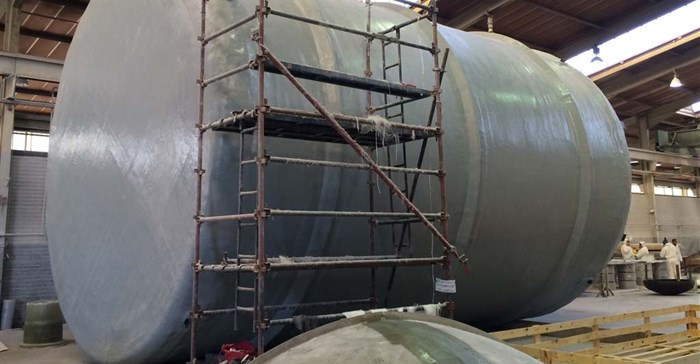
Top stories




LegalTsotsi star’s house, bought with lottery funds, frozen by Special Tribunal
Raymond Joseph 12 hours


More news



The tank, measuring six metres in diameter and 11 metres in height, is capable of holding up to 254,000 litres. The length of the cylinder of this tank was set at nine meters. The facility can manufacture up to 14 meters in a single filament wound process.
The tank was designed for the largest open-pit mine in Africa, Swakop Uranium’s new $2bn Husab Uranium Mine, near Swakopmund, Namibia, and will be used in the mine’s acid leach-process plant as part of the uranium solvent extraction (SX) procedure. The GRP tank will store highly-corrosive chemical contents, including sulphuric acid.
“IWC has already designed and manufactured eight kilometres of GRP piping and 17 GRP tanks for the mine’s process plant, but none as big as this one. It took six weeks to manufacture the tank and the IWC team will now supervise its installation at the Husab Uranium Mine’s process facility," says Roger Rusch, CEO of IWC.
"GRP is an exceptional composite material that is highly resistant to all forms of corrosion, making it ideally suited to solvent extraction processes. Swakop’s decision to opt for a GRP tank of this capacity demonstrates how GRP is becoming the mainstream material of choice for mining processes.”
The Husab Uranium Mine is owned by the world’s second largest uranium producer, Swakop Uranium, and will have the potential to produce around 7,000 tons of uranium per annum when fully operational in two years’ time.
According to Swakop Uranium’s CEO, Zheng Keping, Namibia, currently the world’s fifth-largest producer of uranium, will overtake Niger and Australia as top producer by 2017 due to the production capability of the Husab mine.